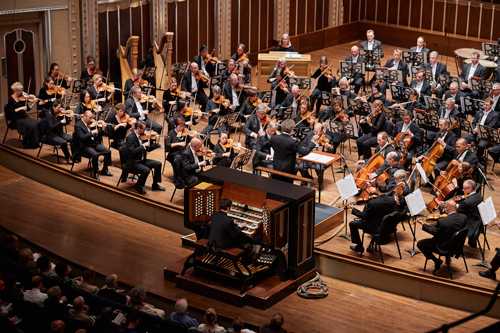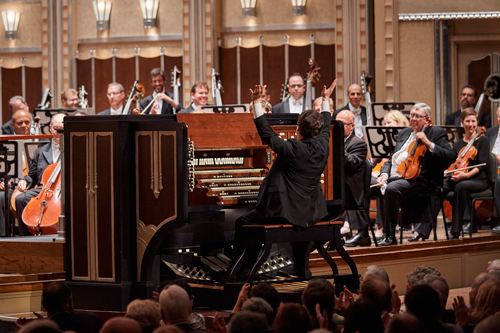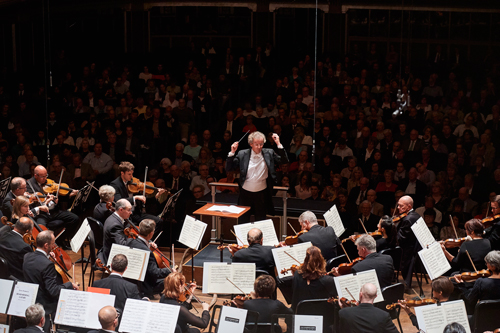by Daniel Hathaway

The 1924 Copland work was the result of the composer’s studies with the famous French musical guru Nadia Boulanger, who played the solo part at its premiere with the New York Symphony in 1925. Copland aimed at treating the instrument like a section of the orchestra, rather than as a featured soloist or a means of adding extra heft and depth to climaxes — its role in orchestral literature ranging from Saint-Saëns to Mahler.
The work begins gently with an insinuating little phrase that gets passed like a rumor among solo instruments and the organ, gathering quiet intensity as it endlessly repeats itself. Bursts of brass and full orchestra and organ herald the nervous second movement scherzo, whose rhythmic complexity is a complete foil to what went before.
The Orchestra’s new principal viola, Wesley Collins, introduced himself by leading his section in the lean but consequential line that begins the third movement. That motive turns into a march with some spectacular organ outbursts.
Listeners who recognize Copland through his later Appalachian Spring and Billy the Kid voice might not guess the author of the Organ Symphony on first hearing, though most would agree that the piece is a signal accomplishment on the part of a young composer who had never heard his music realized by an orchestra before.
Jacobs is an elegant player whose every move at the console — located on the floor in front of the podium — was fluid and graceful, whether reaching out to pull or retire a stop, or winding up for a gigantic chord. His choice of colors blended wonderfully with orchestral timbres, and he played the symphony from memory, which is its own impressive accomplishment.

The evening began with Charles Ives’s Symphony No. 3, “Camp Meeting,” a work whose three movements (Old Folks Gatherin,’ Children’s Day, and Communion) are larded with American Protestant hymn melodies. Mostly written in 1904, the work went unperformed until 1947, when it belatedly won a Pulitzer Prize. Though not as eccentric and edgy as some of Ives’s musical experiments, the performance on Thursday sounded blander than the notes on the page would suggest.

At intermission on Thursday, photographer Jennie Jones was on hand in the Green Room for an exhibit of her images of the Norton Organ restoration from 1998-2000 at the Schantz Organ Company’s workshop in Orville. Ten of the photos are to be mounted in the corridor leading to the organ chamber.
Photos by Roger Mastroianni.
Published on ClevelandClassical.com October 6, 2016.
Click here for a printable copy of this article



